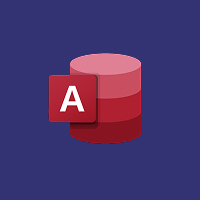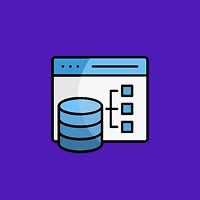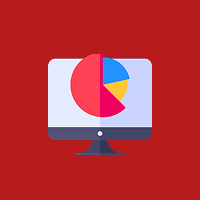Drupal rates among the most versatile Content Management Systems (CMS) and that versatility is very much in part due to the Views module. If you’ve ever wondered how Drupal sites can show lists of articles, product grids, event calendars or filtered search pages then Views is the module they use. Views is a system that lets site builders display content dynamically without needing any code.
If you build a blog, a business site or a large enterprise platform, Drupal Views is an important feature for all beginners to learn. In this article, I will cover what Views is, how it works, and how to get started using it today.
1. What Is Drupal Views?
Views is a query builder and can show all content in various formats, which could be:
- Lists
- Grids
- Tables
- Sliders
- Blocks
- Pages
- Feeds
Instead of coding manual database queries, you configure in a very visual way what to show, how to show it and where it will show.
Where Views Is Used
- Listing pages for blogs
- Product listings in e-commerce
- Blocks for content displayed in the sidebar
- Search result pages
- Event calendars
- Team Member listings
Besides, if you need something displayed dynamically, Views will do that for you.
2. Why Views is Important in Drupal
Views is one of Drupal’s core strengths, because it allows you to create, display and customize built content that can be used again and again; out of the box here’s what makes it powerful:
No Coding Required
Using the visual interface you can build out very complex listings of content effortlessly.
Highly Flexible
You can filter, sort and structure content in any way you want.
Reusable Components
You can display content in many different formats using the same content.
Custom Output
You can also change the fields, layout, formatting and filters at any time.
Integration with Other Modules
There are numerous modules built on top of views that further increase the capability of views (e.g. Views Slideshow, Views Bulk Operations, Views Calendar, Views Search API, etc.)
3. Important Concepts / Terms in Drupal Views (Beginner)
To illustrate these features of Views, I’d like to share a few “terms” so you will understand how to use Views more effectively.
1. Display Types
Views is able to create different types of “outputs”:
- Page (creates a URL)
- BLOCK (placed in theming regions)
- FEED (RSS)
- ATTACHMENT (attached to an existing view)
2. Filters
Filters determine what is displayed in the view.
So for example if you are creating a view in Drupal you might have the following filters:
- Content type: Article
- Published: Yes
- Category: News
3. Sort Criteria
Sort criteria controls how the result is sorted.
For example:
- Newest to oldest
- Alphabetically
- Custom order
4. Fields
Fields determine what content is displayed:
Title
- Summary of the body
- Image
- Author
- Tags
5. Contextual Filters
Contextual filters are items that let you display content dynamically based on the url.
Example: /blog/technology – would only show posts that were based on the technology category.
6. Relationships
These join different data entities.
For example, show articles with their related author profile fields.
4. Steps to Build your First View
The quick example below provides instructions for building a Blog Listing Page with Views.
Step 1: Navigate to Views
Go to:
Structure → Views → Add View
Step 2: Modify Basic Setting
- View name: Blog Listing
- Show: Content
- Content Type: Article
- Create a page: ✔ Checked
- Path: /blog
Step 3: Select Display Format
Choose one:
- Unformatted List
- Grid
- Table
A grid looks nice if you have images for your blog.
Step 4: Add Fields
Typical fields:
- Title
- Image
- Body (Trimmed)
- Created date
You can remove “Content: Title (link)” if you’d like to use a custom look.
Step 5: Add Some Filters
Typical filters for a blog:
- Published: Yes
- Content Type: Article
Step 6: Add Sort Criteria
Set to:
Sort by → Created Date → Descending
Step 7: Save, and then Test out your new Listing Page
You now have a blog listing page at:
/blog
5. Explore Some of the Advanced View Features Suggested for Beginners.
After getting comfortable with views, you can provide more dynamic pages, use the following features
1. Exposed Filters
Allow the end-user to filter content in the frontend. For example, filter articles by category, or filter by date.
2. Contextual Filters
These are useful for the following:
- User Profile pages
- Category in the listing pages
- Related content in a block
3. Relationships
Show a link data in Related content across differing content types
4. Style Plugins
Add some Modules you want for presentation (ex. – Views Slideshow, Views Carousel and Masonry Layout) .
6. Common Applications for Views in Real Projects
- Blog Directory
- Product Listing
- Employee or Job Board with filtering
- Calendar for Events
- Search Results page
- Team Member Directory
- Block of most popular articles
- Suggestions of other content for related articles
No matter how large the Drupal project—small or enterprise—Views is used to display content.
7. Things to Keep in Mind When Using Views
- Keep your views organized with naming conventions
- Rather than duplicating, use sharing, re-use your displays
- Cache your views
- Avoid unnecessary fields
- Rely on contextual filters instead of too many exposed filters
- Limit your number of results to avoid an expensive query
- Test your views on production values
Following some of the best practices will help keep performance and scalability in mind.
Conclusion
Drupal views are some of the most powerful features in the CMS world. While most features have been democratized for non-technical users, Views will allow novices to build custom, dynamic content pages quicker than learning how to write code. Small lists, through to pages with complex filters, Views enables you to make data-driven elements come to life that can adapt to the visitor’s needs.
If you are just getting started on your Drupal adventure, top of your list of things to learn should be Views. Once you understand how Views works, the world is your oyster and this will ultimately make your life easier as you construct experiences for your users that are rich, dynamic and will scale.
Contact Us Today













 Database Development
Database Development












































